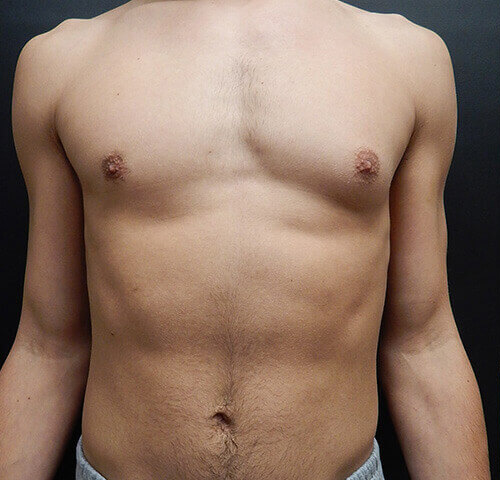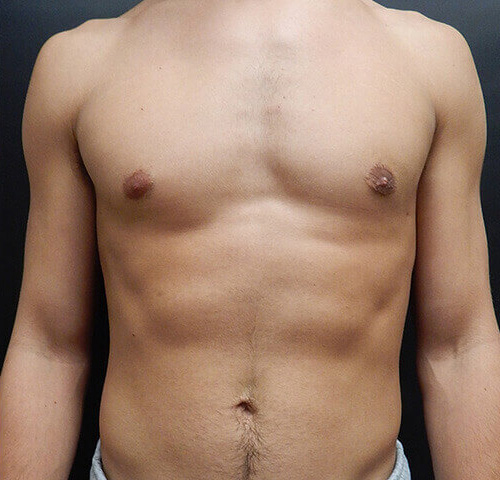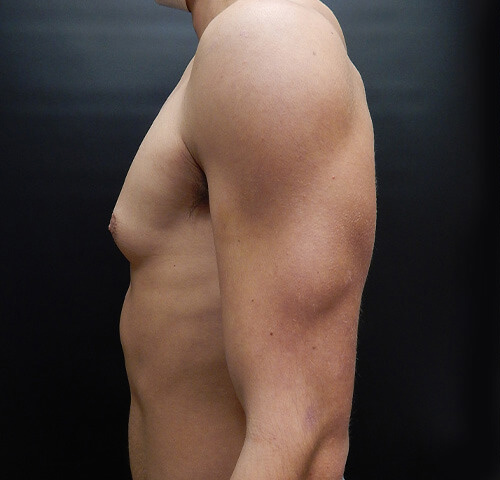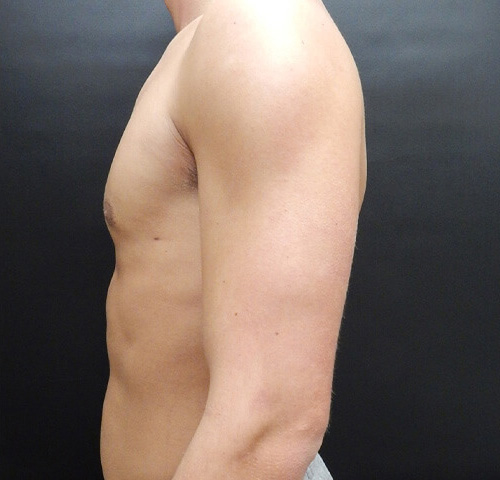Male Breast Reduction (Gynecomastia)
Male breast reduction is a surgical procedure designed to eliminate excess breast tissue in males, known as “gynecomastia”. The presence of excess fat and / or breast tissue in males can prevent men from achieving the firm, toned chest they desire and can be a source of self-consciousness. One of the most common plastic surgeries pursued by men, gynecomastia surgery eliminates “man-boobs” to produce more masculine chest contours.
Get In Touch
Characteristics of Gynecomastia
Common characteristics of gynecomastia include:
- Localized fat deposits overlying the chest and occasionally extending around the armpit
- Overabundance of glandular breast tissue, typically centered under the nipple / areola, possibly causing tenderness
- Excess breast skin causing drooping (ptosis) of the breast
- Puffiness or enlargement of the nipple / areola
What Causes Gynecomastia?
- The vast majority of cases are “idiopathic”, meaning the causes is unknown
- Certain medications
- Marijuana or other substances
- Genetics (often there is a family history)
- Tumors (very rarely)
- Obesity
Photo Gallery
 Before
Before
 After
After
 Before
Before
 After
After
How Is Gynecomastia Treated?
Gynecomastia is most commonly treated with a combination of liposuction and direct, surgical excision of the excess breast tissue. When gynecomastia is more extensive, causing drooping or the breast, excess breast skin may also be removed.
Common Reasons to Have Male Breast Reduction
Restore Confidence
Enlarged breasts can cause significant embarrassment that detracts from a man’s self-esteem. Gynecomastia surgery provides a more masculine appearance to improve a man’s confidence and self-image.
Wear Fitted Clothing
Excess breast and / or fat tissue in the breasts often prevents men from wearing tighter clothing and discourages them from taking off their shirts in public. Male breast reduction surgery improves the contours of the chest so that men can be comfortable no matter what they’re wearing.
Improve Hygiene
In extreme cases, gynecomastia may causes folds and creases in the skin that can lead to rashes, irritation, and other hygiene issues. Gynecomastia surgery eliminates excess breast tissue, which improves hygiene in this area.
Reduce Discomfort
Enlarged male breasts can be uncomfortable and even painful, which can impede performance during physical activities and athletics. Removing excess breast tissue will improve comfort, increase mobility, and increase a man’s quality of life.
Male Breast Reduction FAQs
Q. What is the difference between true gynecomastia and “pseduo-gynecomastia”?
A. Gynecomastia is defined as excess glandular breast tissue. This condition may be mimicked by enlargement of the breast(s) because of excess fatty tissue only, which is called pseudo-gynecomastia. Treatment of pseudo-gynecomastia, like true gynecomastia, typically involves liposuction with or without excess skin tightening.
Q. What is the recovery time for male breast reduction?
A. Most men feel good enough to return to work 1 week after gynecomastia surgery, regardless of the specific technique that is utilized. However, upper body exercise and strenuous physical activity should generally be avoided for at least one month to allow for proper healing.
Q. How long do the results of male breast reduction last?
A. The results of gynecomastia surgery are intended to be permanent, but weight fluctuations and the natural aging process can alter the appearance of the chest over time. Results of male breast reduction surgery can be maintained by following a healthy lifestyle.
Q. Where are the incisions for male breast reduction surgery?
A. Incisions vary depending on the recommended procedure. The vast majority of cases require 1-2, 3mm incisions on the side or underneath the breast and an incision from the 3 o’ clock to the 9 o’ clock position at the interface of the areola and breast skin. More extensive gynecomastia requiring excess skin tightening may require larger incisions.
Q. Will I have a surgical drain after my gynecomastia surgery ?
A. Yes. Typically a small drain is left in each breast for 5-7 days after surgery. In rare circumstances a drain may not be required.
Q. Is male breast reduction covered by health insurance?
A. No.
